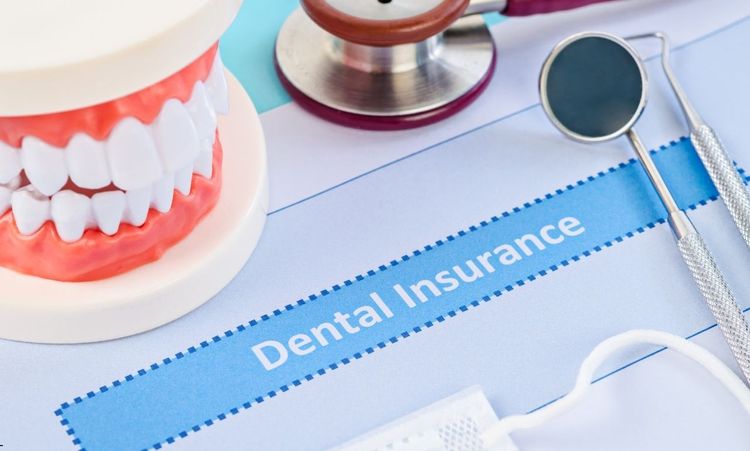Ever wondered why your health insurance doesn’t cover your teeth or eyes?
It feels like an oversight, doesn’t it? You break a bone, and insurance steps in. But a cracked tooth or blurry vision? That’s a different ballgame. Vision and dental care are often excluded from standard medical plans, even though they’re essential to daily life.
The separation isn’t random. It’s rooted in history, policy decisions, and how insurance companies define risk and coverage. Let’s pull back the curtain and understand how we got here.
The Barbaric History of Dentistry
Dentistry didn’t begin as part of medicine. In fact, barbers handled your teeth long before doctors did.
Yes, barbers. During the Middle Ages, they were the go-to professionals for pulling teeth, performing surgeries, and even bloodletting. Medical schools didn’t see oral care as real science. Dentistry was more hands-on than academic.
It wasn’t until the 1800s that dentistry gained formal training. The first dental school in the U.S.—the Baltimore College of Dental Surgery—opened in 1840. Yet, medical schools still didn’t embrace it. That divide shaped what followed.
Medicine and dentistry continued to grow apart. They built separate schools, licensing boards, and career tracks. They developed unique billing systems. And most importantly, they fostered distinct public perceptions. Even today, people see a dentist for cleanings and a doctor for illness. That mindset lingers in our insurance system.
The Insurance Game of Risk
Here’s the thing: insurance is all about managing risk. But vision and dental care just don’t fit neatly into the same category as major medical events.
Let’s break it down. Health insurance was designed to cover unpredictable, catastrophic events—think car crashes, cancer, or heart attacks. These situations are expensive and sudden. You pay premiums so insurance companies absorb that financial shock.
Dental and vision issues? They’re different. They develop gradually and can often be prevented. Tooth decay, gum disease, and eye strain are predictable. You can treat or avoid them with regular checkups. Insurance companies see that as maintenance, not emergency care.
And then there’s cost. A root canal is expensive, but it won’t bankrupt you like a major surgery can. Vision correction is usually elective, not urgent. Insurance providers assess these risks differently and build separate policies to handle them.
It’s less about health, and more about money. Insurance thrives on shared risk. When everyone chips in, the healthy balance out the sick. But with dental and vision, costs are more evenly spread. There’s less risk to pool, so the industry created supplemental plans.
Vision and Dental Are Considered Supplemental
Let’s address the elephant in the room: why does your main insurance card exclude teeth and eyes?
Because dental and vision are categorized as “supplemental.” That word makes it sound optional—even trivial. But it’s not.
Dental infections can lead to heart problems. Untreated vision issues can affect learning, work, and safety. The American Heart Association links gum disease to cardiovascular complications. The Mayo Clinic says poor oral health may increase your risk of developing kidney disease and diabetes. And let’s not forget the toll of chronic eye strain in today’s screen-heavy world.
Yet, policymakers and insurers carved out vision and dental care when creating plans. When Medicare rolled out in the 1960s, it excluded routine dental and eye exams. Medicaid covers dental in some states, but not all. The Affordable Care Act lists pediatric dental and vision as essential—but not for adults.
That’s how we ended up with separate plans. Blue Cross might cover your doctor visit. But you’ll need a different plan for your glasses or wisdom teeth. It’s like booking two flights for the same destination.
Dental Insurance Is Like ‘Triple A For Your Mouth’
You’ve probably heard this analogy before, and it’s pretty accurate.
Dental insurance isn’t really insurance in the traditional sense. It’s more like a discount program or a membership club. You pay a monthly fee. In return, you get a set number of cleanings, exams, and a discount on procedures.
But once you exceed the yearly cap—typically $1,000 to $2,000—the rest comes out of pocket. That’s barely enough to cover a crown and a filling. Need implants? Good luck. Many dental policies don’t touch cosmetic procedures or anything deemed “non-essential.”
So what’s the point? Dental insurance helps with preventive care. It encourages regular checkups, which can stop small problems from becoming big ones. Think of it as car maintenance—oil changes now to avoid a blown engine later.
Still, it’s a tough system. People skip dental visits because they can’t afford coverage. That leads to worse health and higher costs down the road. The irony? It’s cheaper to prevent problems than to fix them—but the structure doesn’t support that logic.
One Section With a Human Touch
Let’s step into real life for a moment.
A close friend of mine skipped dental cleanings for years. His job didn’t offer dental insurance, and money was tight. Eventually, pain forced him to visit a clinic. One root canal turned into three. By the end of it, he owed over $4,000—all out of pocket.
Meanwhile, his health insurance had barely been used that year.
Stories like his aren’t rare. Millions of Americans face similar situations. A missed exam snowballs into massive bills. And since dental and vision care are separate, they slip through the cracks.
It’s not just a financial issue—it’s a public health one.
Why They Haven’t Been Integrated Yet
You’d think combining dental, vision, and health insurance would be a no-brainer. In reality, it’s a bureaucratic headache.
For starters, you’ve got different provider networks. Dentists don’t bill the same way as doctors. Vision care centers often use separate databases. Merging these systems would mean reworking everything—contracts, codes, claims, and even the way visits are logged.
Then there’s politics. Medicare, Medicaid, and private insurers are locked into contracts that go back decades. Changing those rules means navigating mountains of regulation. Lobbyists from both medical and dental associations often resist reform, fearing a loss of control or funding.
And let’s not forget perception. Many still believe oral and vision health are “nice to have,” not “must-haves.” Until that changes, integration will stay out of reach.
The Push for Change
There’s hope, though.
Organizations like the American Dental Association and American Optometric Association continue to raise awareness. They push for stronger connections between oral, visual, and overall health. Some Medicare Advantage plans now offer bundled benefits. Telehealth is helping bridge the gap. States like California are exploring ways to combine services through Medicaid reform.
And patients? They’re speaking up. People want simpler, more complete coverage. They’re tired of juggling three insurance cards and calling five offices. The demand for integration is growing louder.
The future may bring bundled plans that treat the mouth, eyes, and body as one system—because they are.
Conclusion
So, why are vision and dental insurance separate?
Because of history, risk calculations, outdated perceptions, and rigid systems. Teeth and eyes were once seen as less important. That belief shaped education, policy, and insurance structures that still affect us today.
The result? Disjointed care, out-of-pocket costs, and millions avoiding preventive treatment.
But change is possible. As awareness grows and pressure builds, the industry may finally catch up to what patients have known all along—that your mouth and eyes aren’t extras. They’re essential.
Until then, keep asking questions. Compare plans. And remember, your health deserves full attention—every part of it.




